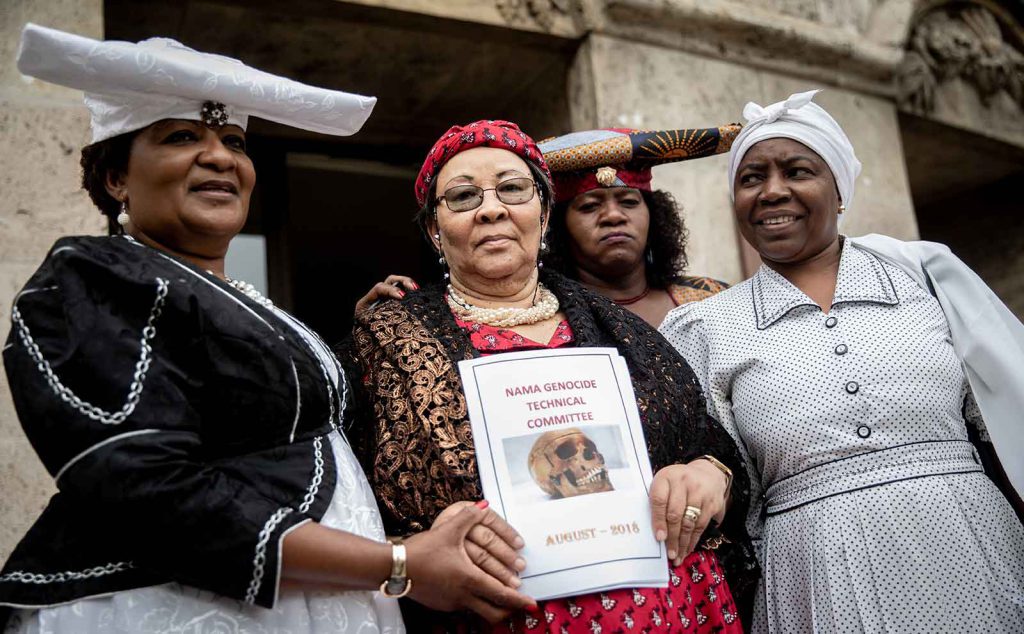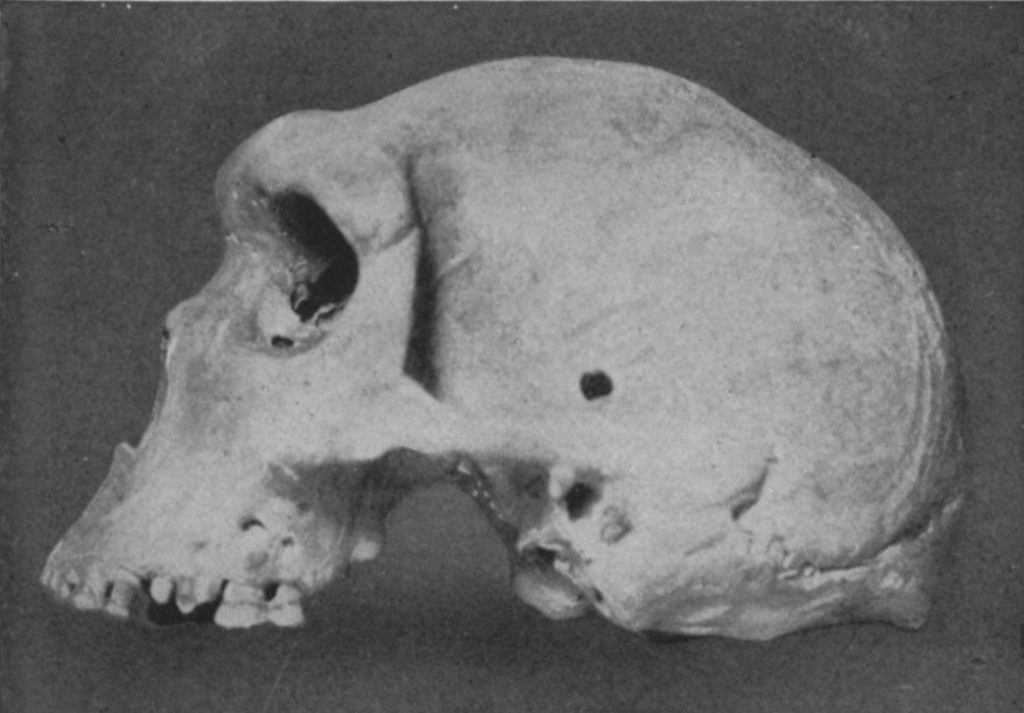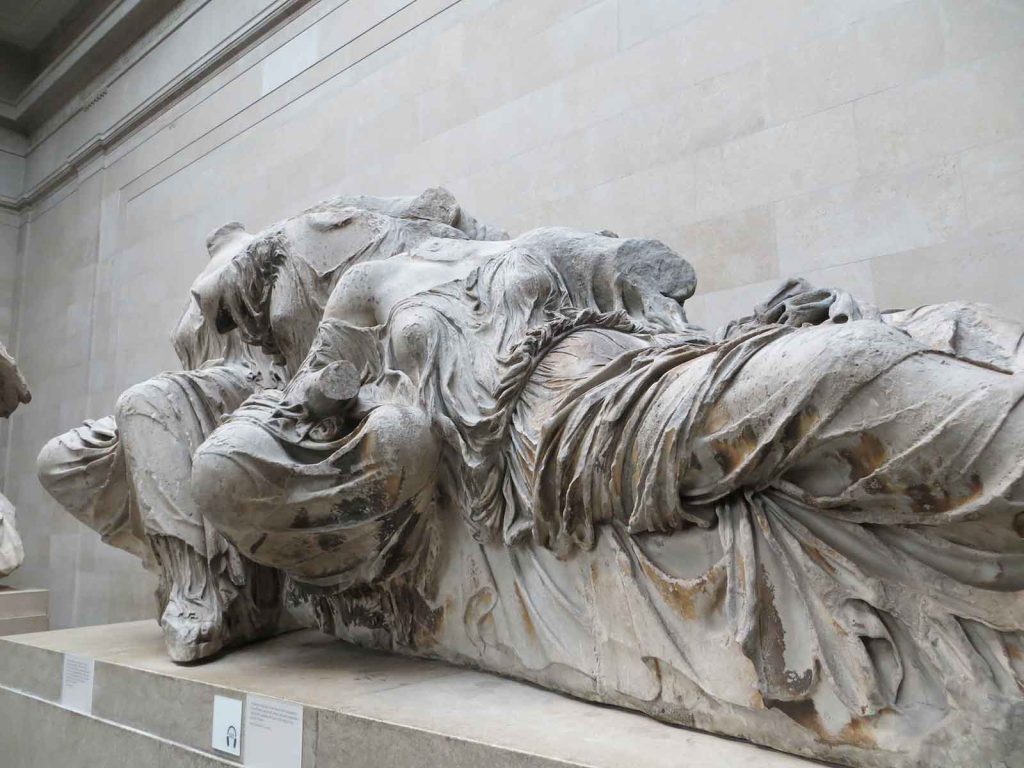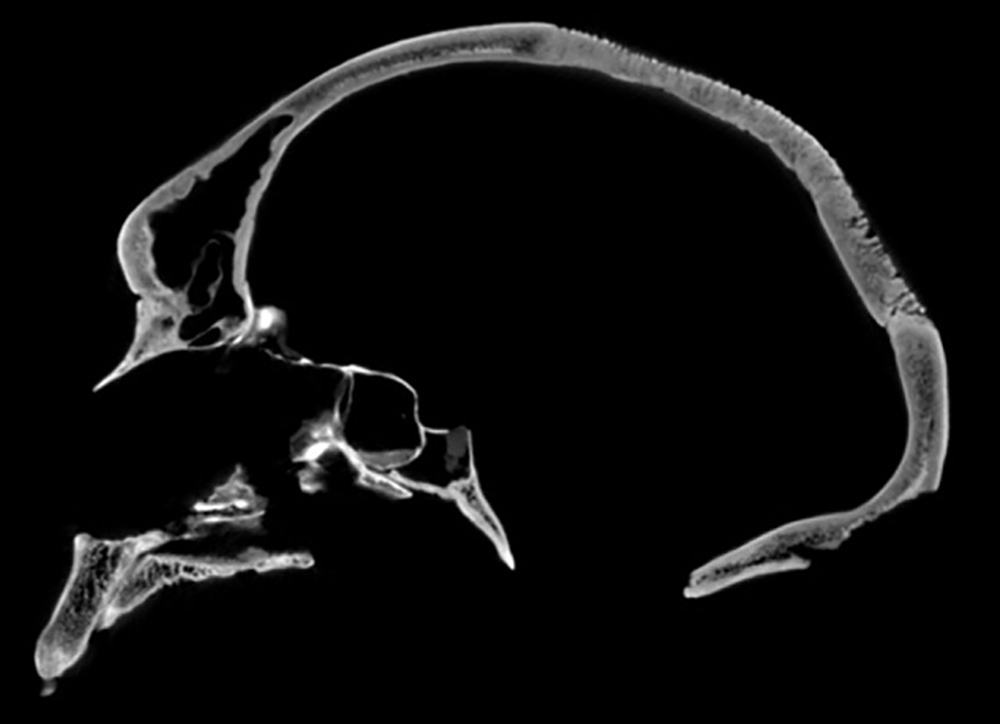Will the Iconic Skull of an Ancient Human Return to Zambia?
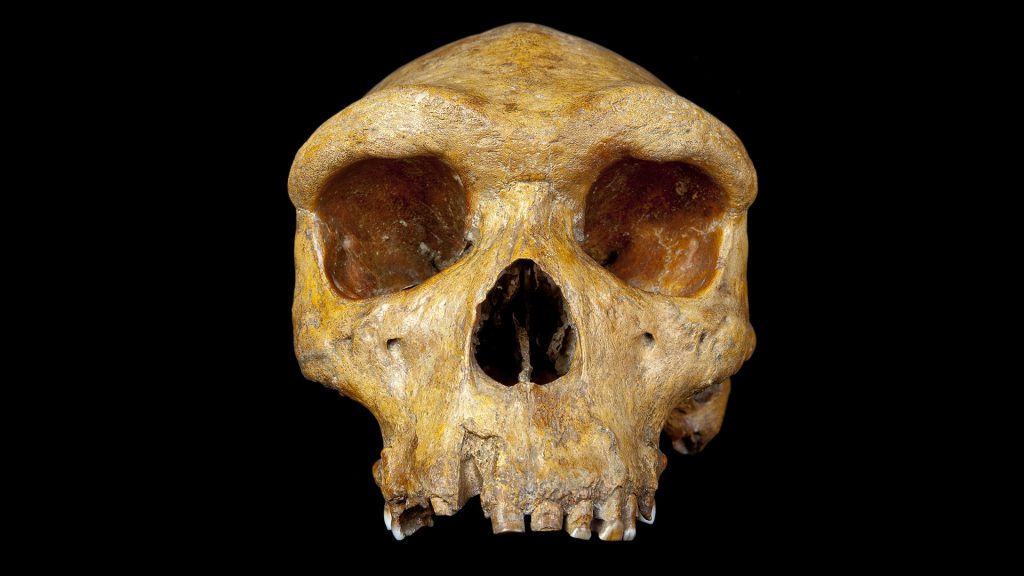
Please note that this article includes images of human remains.
The town of Kabwe sits about 70 miles north of Zambia’s capital, Lusaka, as the crow flies. Just over 200,000 people live in this major transportation crossroads. Like most of this south-central African nation, Kabwe is perched on a high and vast plateau, a land of red soils dotted with shrubby legumes and canopies of small, spindly miombo trees.
Kabwe’s story is defined in part by a mine that opened in the early 1900s after rich deposits of lead and zinc were discovered on the edge of the town. Kabwe—then called Broken Hill—became a major mining center, producing profits for British interests and, later, important metals for the Allies in both world wars. At that time, Zambia was known as Northern Rhodesia, after British mining magnate Cecil Rhodes, whose name has come to symbolize the worst evils of his nation’s colonialism.
The mine shut down in 1994 after its deeper deposits of zinc and lead were exhausted, 30 years after Zambia achieved its independence. But it left the town with a toxic legacy of lead contamination. Recent studies have found that nearly all of Kabwe’s children have blood lead levels so high that their health is in serious danger. Environmentalists consider Kabwe to be one of the most polluted cities on Earth. And they are concerned by reports that the Zambian government has given the international minerals company, Jubilee Metals Group, based in London, permission to begin collecting lead and zinc from surface deposits this year.
Yet the Kabwe mine also left a happier legacy, one that all of humankind can celebrate: In 1921, miners working there discovered a fossilized skull of a possible human ancestor, along with some other bones thought to be associated with it. Dubbed “Rhodesian Man,” this hominin may occupy a pivotal place in the evolutionary transition from Homo erectus to Homo sapiens. Today anthropologists refer to the find as the “Kabwe skull” and recognize it as the first early human fossil discovered in Africa, found at a time when most scientists were looking to Asia or even Europe for the origin of our species.
Soon after its discovery, mining officials sent the fossils to the British Museum for study. In subsequent years, the skull and other remains stayed in the U.K., and today they reside in London’s Natural History Museum. The Zambians have been trying to get them back for decades, to no avail.
The U.K. has a reputation for fiercely resisting the return of antiquities acquired during colonial times, especially tourism-generating treasures like the Parthenon sculptures (a.k.a. Elgin marbles) from Greece and the Rosetta stone from Egypt. But last May, at a meeting of the United Nations Educational, Scientific, and Cultural Organization (UNESCO) heritage committee in Paris, Zambian representatives finally broke through British resistance. The United Kingdom agreed to sit down and talk about the possible repatriation of the skull and related fossils back to Zambia.
British and Zambian officials are being tight-lipped about the upcoming negotiations, citing their sensitive diplomatic nature. Yet the decision to discuss repatriating the skull fits a more recent pattern wherein former colonial powers have begun returning cultural artifacts and human remains to Indigenous peoples. Examples include Germany’s return to Namibia of the remains of more than 25 victims of a colonial-era genocide, including 19 skulls that had been taken out of Africa in the early 20th century for “anthropological” research; France’s return of the remains of Saartjie Baartman (also known as “Hottentot Venus”) to South Africa for proper burial; and the Smithsonian Institution’s repatriation of human remains to New Zealand and to Native American tribes in the United States.
If Britain agrees to return the remains of the Rhodesian Man, it could provide a major boost, the Zambians say, to their national identity and would represent a major victory for repatriation efforts worldwide. At stake are key issues about the rights of former colonies to control their own heritage, and the responsibilities of former colonial powers to own up to the sins of the past.
On June 17, 1921, a Swiss miner named Tom Zwigelaar and a young African miner, working at Broken Hill, uncovered the Rhodesian Man. We owe details of the discovery to Aleš Hrdlička, a famed anthropologist at the Smithsonian Institution, who traveled to Northern Rhodesia to gather more information about the exact location where the skull had been found.
Hrdlička spoke with Zwigelaar himself, who was still working at the mine, about the find. “[Zwigelaar] was found to be a serious middle-aged man, not highly educated but of good common sense,” Hrdlička wrote in a 1926 issue of the American Journal of Physical Anthropology.
Zwigelaar told Hrdlička that he was working with an African miner—whose name was never recorded—at about 10 a.m. that June morning in a pocket of the mine with a lot of lead ore. “After one of the strokes of the pick, some of the stuff fell off, and there was the skull looking at me,” Zwigelaar told him. Hrdlička’s paper included a photo, taken by the mine’s manager shortly after the discovery, of Zwigelaar leaning against the mine shaft holding the skull on the palm of his outstretched left hand.
The skull didn’t stay in Northern Rhodesia for long. A doctor at the Broken Hill Hospital examined it and immediately suspected its scientific importance. About five months later, the Rhodesia Broken Hill Mine Company shipped it off to England, donating the find to the British Museum in London. There, the museum’s keeper of geology, renowned paleontologist Arthur Smith Woodward, named it Homo rhodesiensis. Woodward and other scholars recognized that the skull, with a brain size of about 1,300 cubic centimeters—within the range of H. sapiens—was an important human ancestor. Many anthropologists today classify the skull as belonging to the species Homo heidelbergensis, a descendant of H. erectus. Some researchers think H. heidelbergensis is, in turn, the common ancestor of modern humans and Neanderthals.
Over the years, the “Kabwe skull” has continued to attract scientific attention, especially because it is one of the best-preserved hominin fossils from its time period of roughly 300,000 years ago. That timing coincides with when human evolution experts think H. sapiens diverged from more archaic hominins in Africa. Thus, the Kabwe skull—which includes ancient features such as prominent brow ridges and modern features such as a globular-shaped brain case—could represent a transitional step in human evolution.
In 2016, scientists sampled it for ancient DNA, although so far attempts to sequence even part of the Rhodesian Man’s genome have been unsuccessful. In just the past two years, at least 10 papers have been published about the fossils, many based in whole or in part on CT scanning data from the skull. These studies seem to confirm the skull is a descendant of the earlier H. erectus, but its relationship with later humans, such as H. sapiens and the Neanderthals, is still a matter of debate. Researchers at the Natural History Museum are trying to help resolve this mystery by dating the skull more precisely using modern methods.
Zambia achieved its independence from Britain in 1964. A decade later, the young nation began trying to get the Kabwe skull and associated bones back, but the British government either rejected or ignored its requests.
In recent years, Zambian researchers and cultural officials have left a paper trail of detailed and eloquent arguments—citing moral grounds and international law on cultural artifacts and human remains—for the return of the Kabwe skull. In many ways, the case for repatriation echoes that made by Native Americans under the 1990 Native American Graves Protection and Repatriation Act, which provides for the return of artifacts and human remains under certain defined conditions.
Key to Zambia’s position is a colonial law from 1912 called the Bushman Relics Proclamation. Zambia interprets the proclamation to mean that no cultural artifacts or human remains could be removed from Northern Rhodesia without a permit from the British South Africa Company, which at that time was chartered by the British government to administer the protectorate. The Zambians insist that no such permit was ever issued to the Broken Hill mining company when it donated the skull to the British Museum.
In a 2013 paper in the African Archaeological Review, which chronicles some of this history, Zambian historian Francis Musonda contended that the removal of the skull from Zambia occurred in a colonial context that is anachronistic today. (Greece has made similar arguments for the return of the Parthenon sculptures housed in the British Museum.)
“African people find it unacceptable for a British institution to provide a repository for an African fossil when they themselves have the capacity to do so,” Musonda wrote. “This has put the country in an embarrassing and awkward position because of the impression created that it is incapable of looking after its own hominin fossil.” And even if the conditions in Zambia were “not ideal,” Musonda argued, “why not assist the country in creating conditions deemed suitable for the object?”
It is still unclear when the actual negotiations between Zambia and the U.K. will begin, and Zambian officials have expressed some frustration at the delays—both in the Zambian press and to SAPIENS. In the meantime, writes Flexon Mizinga, executive secretary of the National Museums Board of Zambia, in an email, “it would be premature to make any statements on this matter before exhausting consultations in progress with the Government of Zambia.” Mizinga adds that “we wouldn’t want to jeopardize the multilateral issues involved.”
A spokesperson for the U.K.’s Department for Digital, Culture, Media, and Sport was equally circumspect, only confirming the UNESCO agreement and that it was expected to lead to “discussions to find a mutually acceptable solution to the Broken Hill skull case.”
Nevertheless, the news did get considerable coverage in the Zambian press, and on June 1, 2018, the Zambian delegation in Paris put out a detailed statement hailing the diplomatic breakthrough.
In email correspondence, numerous human evolution researchers expressed sympathy with Zambia’s position. “We should all support repatriation of cultural objects looted or taken away, for whatever reason, from any country in the world,” writes Yohannes Haile-Selassie, curator of physical anthropology at the Cleveland Museum of Natural History.
“The pride that Africans feel about ancestry is unwavering and pronounced,” writes Wendy Black, curator of pre-colonial archaeology at the Iziko Museums of South Africa in Cape Town. “For Africans, repatriation of these items is viewed as part of a healing process, where all parties concerned can make amends, forgive, and move on.”
Haile-Selassie, an Ethiopian who is active in paleoanthropological research in his native country, points out that the key question is who will have control—not only of the actual skull but also the CT scans and other digitalized information that have been gathered on the specimen over many years. That information, which the Natural History Museum now considers its intellectual property, should be under Zambia’s control, he contends.
Another issue is access, which human evolution researchers are eager to maintain. “It is an aesthetically beautiful specimen,” writes Leslie Aiello, president of the American Association of Physical Anthropologists. Aiello, formerly at the University College London and a past president of the Wenner-Gren Foundation, which funds SAPIENS, adds that “while in London, I used to ask them to get it out occasionally just so I could admire it!”
Some researchers think that before the Kabwe skull is repatriated, certain conditions should be met to ensure that scientists will be able to access and study it in the future. Gerhard Weber, an anthropologist at the University of Vienna in Austria who has studied CT scans of the skull, writes that even if it is scanned and digitalized with “the best resolution possible” before it leaves London, “this will only help for a limited time. … There will be new methods in 20, 50, or 100 years that we cannot even imagine today.” Weber suggests that agreements should be negotiated with Zambia that guarantee access to the skull so that novel techniques can be applied. He also thinks an international committee should monitor these agreements.
But Black and others don’t see any inherent barriers to access if Zambia gets the Kabwe skull back. “Researchers travel to Africa all the time,” Black maintains. “Museums in South Africa and Kenya, for example, provide access to their collections to numerous researchers from around the world each year. … One could apply for access, as all researchers do at all institutions.”
Furthermore, writes Rebecca Ackermann, a biological anthropologist at the University of Cape Town in South Africa, “a move to Lusaka would certainly make it easier for African researchers to study the remains.” Indeed, the Kabwe skull, discovered when Zambia was still under colonial rule and then whisked out of the country, is an outlier; most hominin fossils discovered in Africa—such as Ethiopia’s “Lucy” and the many fossils found in Kenya, Tanzania, and South Africa—have remained in their countries of origin.
Ackermann and others contend that non-African researchers and museums must be willing to loosen their grips on the spoils of the colonial past, even ones that are vital to our understanding of human origins. “There has been a whole lot of taking and comparatively little giving back,” she contends. Keeping the skull in British—not Zambian—hands, she argues, perpetuates a colonial legacy. “Any claim that Zambians can’t take responsibility for their own heritage is frankly racist.”
This article was republished at Pacific Standard, The Atlantic,and Discover.com.

































